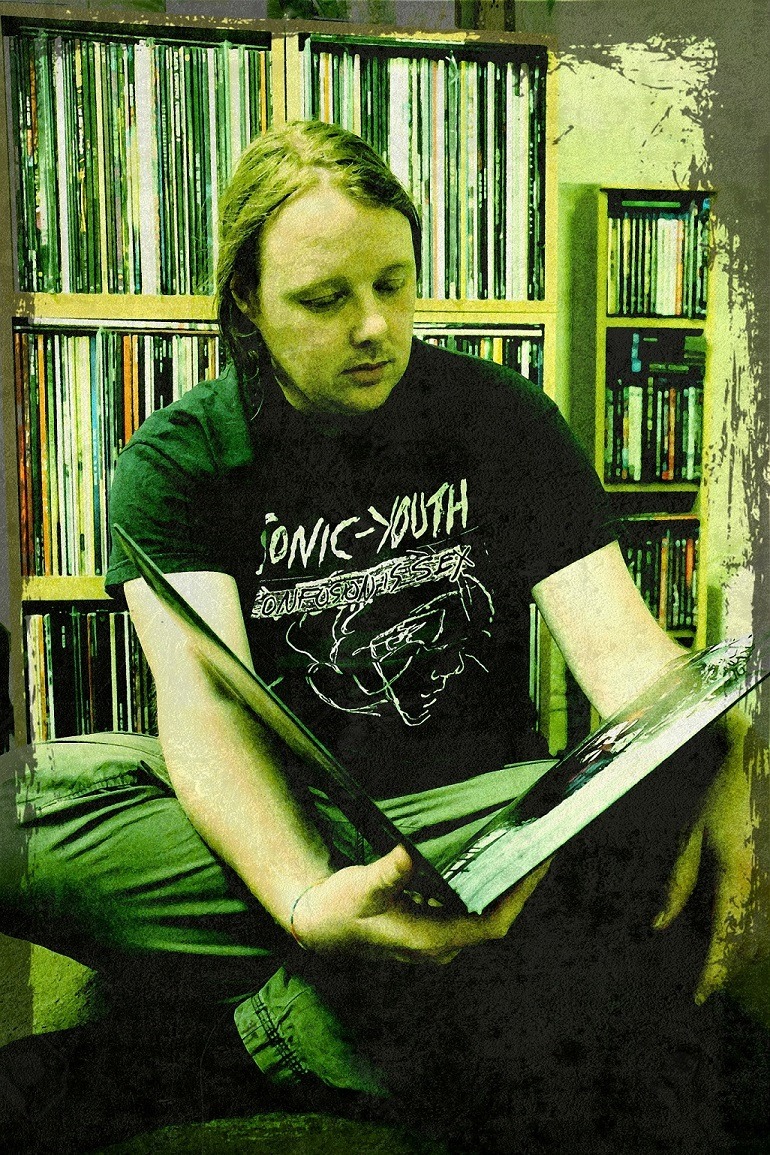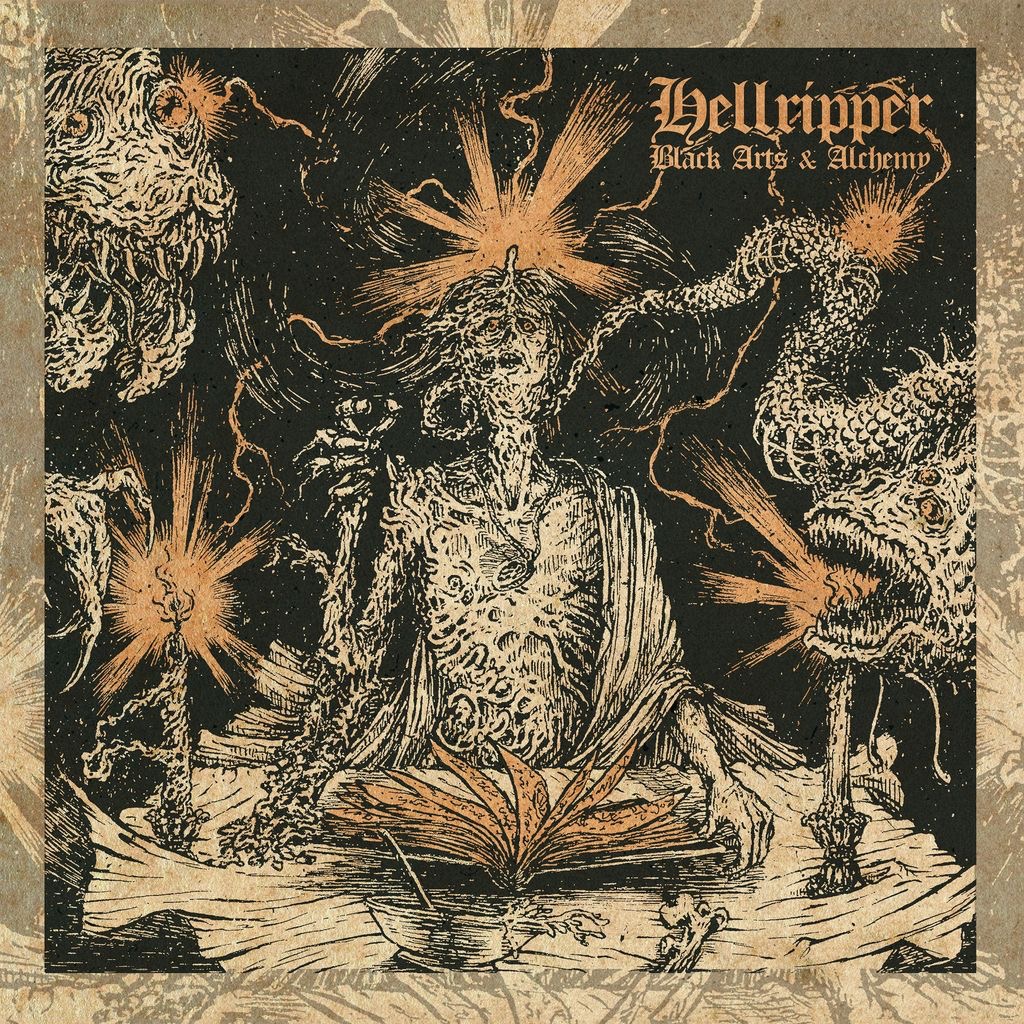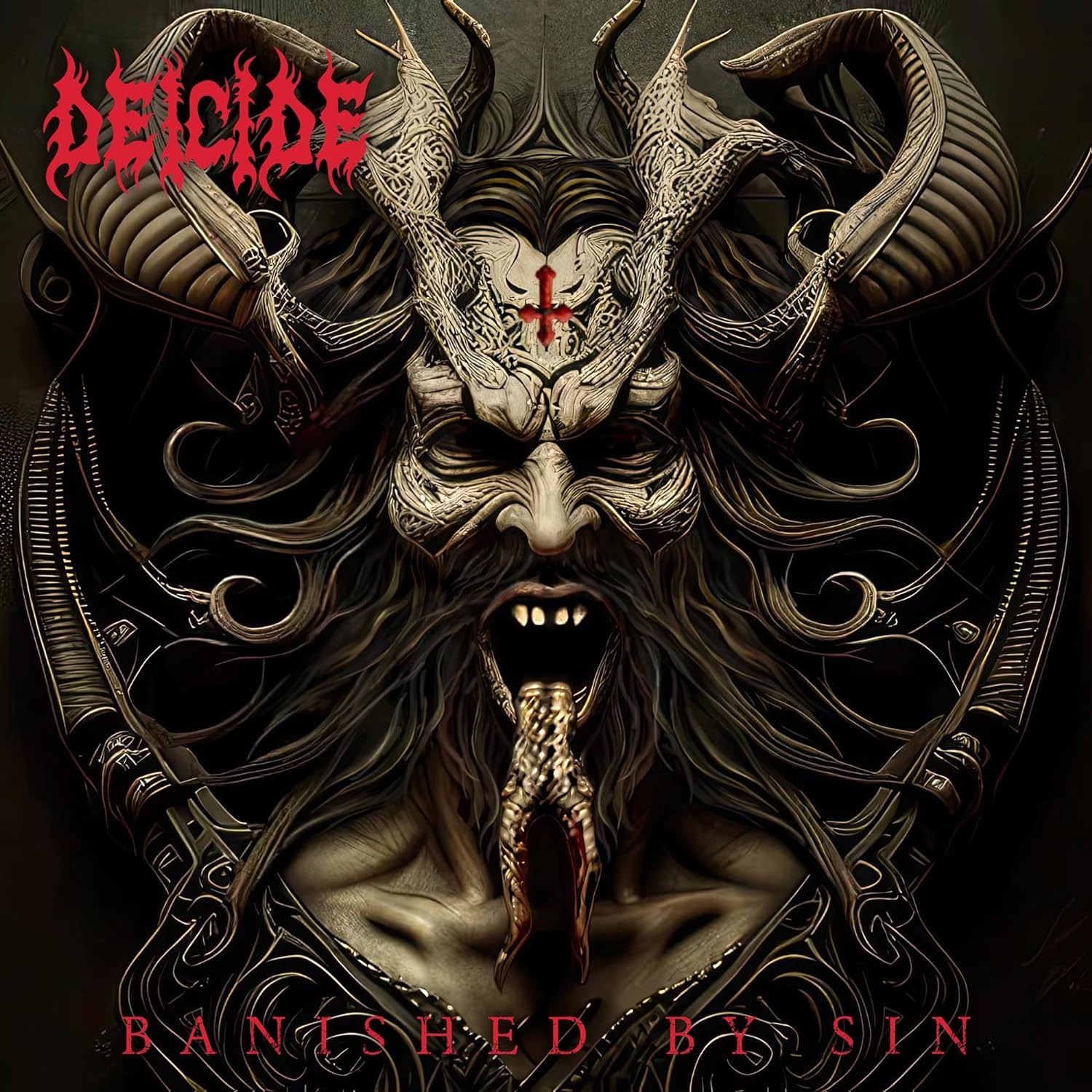Time has been kind to Uriah Heep’s 1970 debut, …Very ‘Eavy Very ‘Umble… an album that was originally rather mauled critically (most notably by a Rolling Stone reviewer who threatened suicide should the band prove successful). Now recognised as a milestone on the route march towards metal, it has been reissued countless times, reappearing here alongside its follow up, 1971’s Salisbury, as part of an extended vinyl reissue campaign from BMG, offering the band’s albums in gorgeous picture disc format.
This review covers the first two albums in the series and, as is common with picture disc releases, each of the albums is housed in a simple, clear sleeve, with a sticker strip on the left-hand side containing the barest information and, in this case, incorrectly stating that the album contains the single Bird Of Prey – actually on follow up album Salisbury. Such gaffes aside, it’s the music that counts and it’s reasonable to suppose that the target market for these releases already have several copies of the album on LP, Cassette and CD tucked away within their collections already, making additional information somewhat superfluous. With regard the musical front, picture discs do have the unfortunate reputation of being inferior in sound quality to standard pressings and this proves to be the case here. While there are very few clicks and pops evident amidst the sturm und drang, quieter passages reveal a low-level rumble that persists across the recording. In all honesty, it’s all but inaudible as the amps kick into action, but it is there and, particularly on the quieter passages of the more sonically restrained Salisbury, it does become noticeable.
…Very ‘Eavy Very ‘Umble… – 1970
The album kicks off with the stabbing proto metal of Gypsy, an awkward, angular piece of music, which has more in common with King Crimson than the typical hard rock of the day, although the organ insanity of the mid-section does much to eschew subtlety in favour of ear-shredding intensity. It’s a hell of a start, suggesting an influence on everyone from Candlemass to Opeth, and it’s easy to imagine why the listeners of the day may well have been baffled by its sheer intensity. Following on, Walking in Your Shadow has an unenviable task, with the band opting for a bluesier sound with a Rory Gallagher edge to it. In contrast, Come Away Melinda is a pastoral, proggy number, showing a sensitive side to the band suitably hidden beneath the hulking riffs of the opening tracks. It’s hard to believe, listening now, that reviewers of the period could be so obtuse as to ignore the variety on offer here, making you wonder if they ever got as far as this rather more mellifluous piece of music before employing their poison pens. Speaking of variety, the first side ends with a passable stab at jazz-infused blues on Lucy Blues, the warble of the organ and textured piano neatly offset by the prowling bass and David Byron’s subtly worn vocal.
Kicking off side two, the effervescent heavy pop-rock of Dreammare explodes into action, with vocal harmonies and sparkling riffs getting the blood pumping. Keeping things heavy, the wired riff of Real Turned On has a lascivious edge to it that may well have proved too much for 1970s audiences. Certainly, there’s little to date the track beyond the slightly treble-heavy production, and it’s another example of the influence the Heep have had on bands across the years. The sprightly I’ll Keep on Trying is a fascinating piece of music, straddling the divide between heavy rock and heavy prog, the band deftly switching between styles across the track. The album concludes with Wake Up (Set Your Sights), a track that opens with huge, stair-stepping chords before traversing the worlds of jazz and blues (always maintaining that hard rock edge) on its way to the album’s run out groove.
A hugely influential album, …Very ‘Eavy Very ‘Umble… remains as thrilling today as when it was released. With an eclectic array of compositions on offer, fans of heavy (or should that be ‘eavy?) metal’s origins will find much to admire in Gypsy, Dreammare and Wake Up, while students of bluesier hard rock will equally go a bundle on Come Away Melinda and Walking in Your Shadow. It’s an impressive debut and fans of the band will surely enjoy having the record in picture disc format. 8/10
Salisbury – 1971
With just six tracks on offer, including the sixteen-minute title track, Salisbury expands upon the progressive tendencies of its forebear, delivering a mesmerising collection that, once again, divided critics upon its release, only to gain a far greater level of appreciation in later years. As with …Very ‘Eavy Very ‘Umble…, the picture disc process means that there is a fair degree of surface noise present throughout the album. Nevertheless, it is a gorgeous looking slab of wax, and one that collectors will surely be glad to obtain.
Musically, the album maintains the diversity of its forebear, adding even greater depth with a progressive suite that dominates the second side. However, there’s plenty to enjoy on the rather more conventional first side before we get to that particular composition. While prog may have been hiding within the grooves of Salisbury, the listeners of 1971 may well have believed the picture of a chieftain tank adorning to cover to be portentous given the explosive nature of Bird of Prey. With massed vocals ranging from hard rock snarl to falsetto yelp, Bird of Prey foreshadows Queen’s eccentric operatics by a good three years, showcasing a band comfortable with engaging the unusual. As an opening number, it hits like a high explosive round and, as a result, leaves the listener entirely wrong-footed by the subtle, organ led The Park. Unfortunately, it is here, on calmer tracks, that the surface noise tends to break through, distracting a touch from the gorgeous, picked guitar lines, although as the pace picks up, this once more recedes into the background. A crushing great riff announces Time to Live, complete with pounding rhythm section, ferocious vocal and dizzying solo. Another shift in style occurs on the folk-infused hard rock of Lady in Black, a band mainstay down the years, and a surprisingly addictive piece of music thanks to its wordless outro. Be warned, play this in the morning, and you’ll be humming the damn thing all day, no matter how well you already know it.
The second side offers just two tracks. The first of these, High Priestess, catching the listener on the hop with a short, bucolic introduction – all liquid slide and gentle sounds – before exploding into a rampant rocker, complete with harmonised lead guitar and throbbing bass. However, the main event is the title track, a sixteen-minute opus complete with 26-piece orchestra. A complex arrangement that stands apart from anything else the Heep have ever attempted, it is a truly mesmerising piece of music and a perfect example of when labels made at least some effort to support ambition as well as commerce. The opening, an orchestral blast with a cinematic feel, comes as something of a shock to the system after the short, rather more conventional pieces found elsewhere on the album. For the listener in 1971, it’s easy to imagine the shock with which the majestic overture would have been greeted and even now, at a remove of some fifty years, it still sounds fresh and inspired. From the off, band and orchestra gel well, while David Bryon sounds positively on fire as he unleashes his vocals. A varied piece that ranges from the progressive rock of Crimson and Floyd (not least Atom Heart Mother, released just a year before) to jazz and hard rock, Salisbury is the sound of a band exploring their potential and finding it to be near limitless given time and space in which to operate. It’s also a strong recording, with Peter Gallen’s mixing work proving more than up to the task of bringing the myriad threads together into a coherent and exciting whole.
While 1972’s Demons and Wizards may regularly be named as the band’s most successful outing, there is a strong argument for Salisbury and, especially for those within the prog community, it stands as the band’s most impressively ambitious achievement. They would never attempt anything quite so daring again, and while their fortunes would wax and wane over the years, Salisbury remains essential listening thanks to its mix of youthful bravado and innocence, resulting in the sort of epic-length, all-but-the-kitchen-sink production, that few older bands would contemplate, let alone attempt. A milestone in the band’s storied catalogue, Salisbury may not quite have achieved the crushing dominance its artwork suggested, but it certainly stands as a towering work from a truly audacious band. 9/10
Conclusion
Not for the merely curious (a compilation such as Choices might be better for the unfamiliar), these picture disc reissues are very much collector’s items for the Uriah Heep fan and, in this, they succeed admirably. While perfectly playable, the surface noise can distract and it’s easy to imagine these rather lovely pressings being purchased as second copies for those who admire both the art and the band. The quality of the music, of course, is undeniable (unless you’re a Rolling Stone critic), and while there are those who fete later episodes in the band’s career, these opening chapters showcase a daring and ambitious band just starting to explore the myriad possibilities of hard rock and progressive. As such, both of these limited edition discs come highly recommended.













Leave a Reply